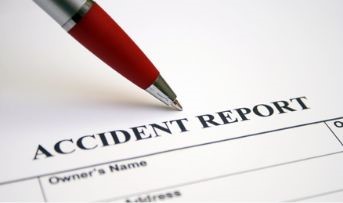General Insurance Blogs, Articles & Updates by - Magma HDI
Have us call you
- RENEW YOUR POLICY
- BUY NEW POLICY

Getting your health insurance is as easy as just a few clicks online
For today’s generation, long working hours, irregular sleep schedules, take-out meals, and an unhealthy lifestyle are becoming the new normal, impacting their everyday lives. An evident proof is an increased need for medical attention, which makes health insurance an obvious necessity.
With the 5G advancement of the mobile network, we trust the internet to provide us with faster and accurate information about everything, including health. Fortunately, so do the majority of health insurers. They rely upon the internet to offer a convenient, cost-effective, fast, and secure platform for their customers to buy online health insurance.
Why is online health insurance better? People still hesitate with the idea of online money transactions due to the possibility of fraud. But, this doubt holds no good if you are transacting on official websites of reputed insurance companies. Plus, the multitude of benefits that online policy portals bring is impressive. You get a better level of transparency than what any agent can provide you. You can also compare many websites for online health insurance before you finalise one.
The internet takes the whole idea of saving time to the next level. A few minutes spent online comparing different policies and their features is more convenient than visiting agents.
Health insurance companies are offering online buyers with exciting incentives to encourage more online health insurance purchases. As you buy directly with the insurance company, they save on intermediary costs and commissions to the agents. Therefore, online health insurance works out to be significantly lower.
Things to consider while buying an online health insurance. The most popular insurance isn’t necessarily the most appropriate one. The requirements and expectations of every person from their health insurance differ. To find the best plan for you and your family, consider the following factors:
• The number of members in your family that you want to insure
• Their age, diseases they suffer from, or if they frequently require medical attention
• The place you live, and the health factors associated with that place
• Your average medical expense
• The expected amount of cover
Note – The premium you pay is based on your current financial situation and family income.
How to buy health insurance online?
1. Visit the website of the desired insurance company.
2. Enter your requirements and the personal information of you and your family.
3. You will receive multiple quotes. Select the most suitable for you.
4. Enter your account details and make the payments of the required amount.
5. You will receive confirmation and the details of your policy via email.
6. Congratulations, you are now insured.
The best insurance agencies provide complete transparency so that customers make informed purchases. In addition, insurers strive to facilitate the best plans, give a shedload of options and a hassle-free experience by integrating the latest technology.
Often people make the mistake of buying the same policies as recommended by their friends and families. This may create financial stress on your family. Always have the right due diligence because your lack of knowledge might prevent you from enjoying all the features of the said policy.
With several promising technologies to enhance consumers' use and experience, take advantage of picking out perfect online health insurance for you and your family.
Know more about the Health Insurances available, click here…

If you are a travel enthusiast, you must buy personal accident insurance
Travel is like hitting a reset on the mundane flow of life. It is a breath of fresh air a amid hectic schedule involving tedious work. Refocusing efforts on personal growth rather than material success to prevent burnout and enhance productivity has allowed young professionals to take holiday breaks, explore the world to develop new perspectives, and take on new challenges.
While travel opens up a new world of possibilities, cultures, and experiences, one should never neglect uncertainties. Accidents are an uncertainty in life that one must always prepare for. Often forsaken since they are rare occurrences, irrespective of scale, they leave the victim with pain, financial burdens, and sometimes, lifetime disabilities.
Although you can't prevent accidents, you can be prepared and protect yourself against allied financial losses by buying personal accident insurance India. If you are an avid traveller, here's why you should consider purchasing personal accident insurance India before setting on your next journey.
What is personal accident insurance India?
The severity of accidents is often undermined due to their infrequency. However, irrespective of the cause of the accident, they may lead to accidental deaths, bodily injuries, or disabilities. Personal accident insurance India seeks to insure the policyholder against the financial losses arising from specific accidents that health and life insurance exclude.
Why should travellers purchase personal accident insurance India?
1. Stress-free travel: Exploring new lands and getting a taste of new experiences is best enjoyed without additional stress. Personal accident insurance India protects against accidents you may encounter while on your globe-trotting adventure. Check the fine print of your policy to ensure that your insurer covers accidents occurring abroad. If not, make sure you buy additional specific coverage for the same.
2. Medical compensation:
With medical inflation reaching record heights, healthcare services are costly across the globe. Depending on your preferred destination, you may have to shell out more if you need medical attention due to an accident. Personal accident insurance India covers hospitalisation and allied medical expenses, lifting the financial burden from your shoulders.
3. Additional benefits:
Apart from the medical compensation offered to the policyholder, their family can avail of family transportation allowance, children's education allowance, loan protection services, etc., to shift the burden from the policyholder.
Types of personal accident policy coverage.
1. Accidental death cover:
In case of the insured's accidental death, the nominee receives 100% of the total insured sum stated in the policy.
2. Permanent partial disability cover:
This insurance plan acknowledges disabilities that limit the functioning of the person. For partial disabilities like the loss of specific senses or body parts, you can claim up to 100% of the insured sum.
3. Permanent total disability cover:
Accidents that lead to the loss of essential body parts like limbs that directly impact the insured's ability to return to normal activities make the nominee/policyholder eligible to claim the assured sum.
4. Temporary total disability cover:
Where accidents impair the policyholder's ability to return to regular activities temporarily, the insurer pays a specified sum during the rehabilitation period in the form of a daily or weekly allowance to meet EMI payments, general living expenses, etc.
Exclusions of personal accident insurance.
Before purchasing personal accident insurance India, you must be aware of some of the main exclusions not covered by the policy:
● Natural death
● Pre-existing disability or injury
● Suicide or self-injuries
● Influence of intoxicants
● Acts of terrorism
● Engaging in criminal activities
Encountering an accident is not predictable. Purchasing personal accident insurance protects the policyholder against many accidents, including travel accidents. To protect yourself and your loved ones from unknown risks and travel stress-free, buy personal accident insurance India at the earliest from your preferred insurer!
Click HERE to buy personal accident insurance India policy.
Disclaimer: The information provided above is for illustrative purposes only. To get more details, please refer to policy wordings and prospectus before purchasing a policy.

All You Need to Know About the COVID-19 Vaccines
COVID-19 vaccines strengthen our immune system, and help it recognize and combat the coronavirus. The type and frequency of doses vary for different vaccines, however, beneficiaries are advised to take two shots of vaccines currently available in the country. Post vaccination, it generally takes a minimum of two weeks for anyone to build immunity against the virus.
Key Information and COVID-19 Vaccine Advisory:
- From 1st April 2021, all individuals over the age of 45 (irrespective of co-morbidities or pre-medical conditions) are eligible for the COVID-19 vaccine.
- Beneficiaries are requested to complete all prescribed doses of the vaccine.
- As per medical experts, post-vaccination effects (nausea, mild fever being the most common) are normal.
- Even after vaccination, all safety measures for COVID-19 are to be strictly followed at all times, including social distancing and wearing masks.
- The duration for which the COVID-19 vaccines are effective and its efficacy against the new strains of the virus is still unknown. Hence, it is absolutely essential to not let our guards down.
- We urge you to not be misled by fake vaccine marketing / promotions, as it is not available in open markets yet.
- Do not attend a vaccination appointment if you are self-isolating, or awaiting COVID-19 test results, or are unwell.
- Research efforts are ongoing for knowing how many people should get vaccinated to attain herd immunity (which means enough people being vaccinated making it tough for coronavirus to spread from person to person). Hence, rumors about herd immunity being already attained, should strictly be ignored.
- To know more about the vaccines, please download the CoWIN App, or log on to www.cowin.gov.in. You can also visit the Ministry of Health and Family Welfare (MoHFW) website (www.mohfw.gov.in) for regular updates about COVID-19.
- For any queries, call the Government helpline number 1075 or +91 11-23978046.
Cost and Availability of COVID-19 Vaccine:
- Vaccines are available at different government hospitals for free and at private hospitals at a price of INR 250 per dose.
- The COVID-19 vaccination providers cannot deny any individual above the age of 45 to get themselves vaccinated, except for reasons best known to medical practitioners.
- The government is currently working on making the vaccines widely available for everyone at no cost in the coming months.

Got a salary hike? Four things you must do after getting an increment!
Ever imagined what the three magical words for people with jobs are? It has to be, “Salary got credited”. But the actual happiness comes in when you get an increment in your current salary. Getting a salary raise after years of hard work is a significant milestone in life. After constantly working towards achieving your goals, earning a salary hike is a moment to celebrate, even if it’s small.
Once your source of income increases, your expenses also go up simultaneously. In addition to this, your taxes inflate too. Unless you have a proper financial plan, things might take a toll. But, not to worry, here are a few essential steps that you can implement after getting a salary increment.
1. Clear all your debts – no more instalment reminders:
Before you start spending more, it is important to clear the outstanding dues. If you plan to purchase something new on credit card or instalment, you must clear your loans or ongoing EMI. This will ensure that you don’t end up in any financial burden or unnecessary late payment on your existing loans. Once your dues are paid, your financial responsibility will automatically lower down, meaning you can spend extra on your next vacation or upgrade of your car!
2. Review your general insurance plans – improve the quality of life:
Life is unpredictable; you never know what another day may bring. The previous insurance might not be enough to fulfil your current financial needs. As your salary increases, you want to make sure that you secure the future of your loved ones by saving adequate funds. Insurances could be multiple such as your life insurance plans, motor insurance, general insurance plans, or your health insurance. Make sure you increase the budget of your coverage with more features for the better financial security of your family.
3. Make effective tax planning – be a super saver:
No one can neglect the taxes. As a responsible citizen, you are obligated to pay a certain amount of income tax on your earnings, depending on your income. After an increment, your taxes will also increase. Unless there’s proper planning, you might end up paying heavy taxes, which you could avoid by investing in financial instruments. For example, you can invest in life insurance plans, mutual funds, stocks, etc. Under the law, the taxes will not consider the fees you will pay for your insurance.
4. Work towards increasing your net worth – get ready to grow more:
Securing your money for long-term benefits is one of the wisest decisions. As your source of income increases, your standard of living improves. Your hobbies will change as you want to travel, learn new courses, or provide all the facilities to your kids. However, this cannot happen if you simply earn and spend. You can decide to invest in properties, gold or SIPs. Depending on the risk you can bear, ensure to invest in balanced funds, equity, or other market-linked funds.
After years of hard work, you feel more motivated at work when you finally get recognition. Always hold on to this motivation and work with dedication to justify respect and financial security. Since maintaining a sensible lifestyle should be your priority, ensure you get protected with a robust general insurance plan to gain extra benefits for you and your family. As it is rightly said that hard work has no substitute, you need to sweat and exploit your capabilities to conquer the milestones you’ve set for yourselves.
Click HERE to know more about the general insurance plans available.
Disclaimer: The information provided above is for illustrative purposes only. To get more details, please refer to policy wordings and prospectus before purchasing a policy.


